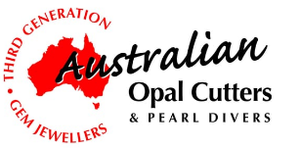Ethiopian Water Test - A Valuable Method for Verifying Hydrophane Characteristics of Opal
Learning about hydrophane opal is crucial for understanding the effect it has on the jewellery industry. For an extended period, the term "hydrophane" has served as a mineralogical classification for absorbent opal. Primarily, discussions within mineralogy centered on the opal types capacity or trait to absorb water, hence the prefix "hydro." Additionally, as water permeated the opal, its appearance underwent changes, hence the suffix "phane."
Dana’s System of Mineralogy (Frondel 1962) describes hydrophane as: “A white or light coloured translucent to opaque type of opal that becomes virtually transparent when placed in water.”
It's worth noting that encounters with hydrophane opal were primarily within the domain of mineralogical specimens. Consequently, descriptions and discussions surrounding hydrophane opal were typically confined to mineralogical literature.
As opal production flourishes in Wollo, Ethiopia, the availability of hydrophane opals has surged. These deposits offer exquisite material at a fraction of the cost compared to opals from other sources like Australia and Brazil. However, the majority of opals from Wollo exhibit hydrophane characteristics, meaning they possess a porous structure capable of absorbing water, akin to a sponge.
opals has surged. These deposits offer exquisite material at a fraction of the cost compared to opals from other sources like Australia and Brazil. However, the majority of opals from Wollo exhibit hydrophane characteristics, meaning they possess a porous structure capable of absorbing water, akin to a sponge.
The porous nature of hydrophane opals can occasionally pose durability concerns, potentially leading to significant cracking, depending on the degree of porosity and inclusions within the material. Predicting whether such opals will crack upon immersion is challenging, but the risk is notably higher compared to nonporous varieties.
In hydrophane opals with body colours other than white, there is a distinct possibility of artificial colouration. The ability of these stones to absorb water also makes them susceptible to absorbing dyes. While water absorption alone is not definitive proof of dye treatment, it warrants extra caution during the assessment of opals for colour modifications, particularly if they exhibit body colours that can occur naturally, such as orange.

For white or colourless opals, assessing for dye treatment may not be necessary. However, gemologists may find it valuable to ascertain if these opals are hydrophane to caution clients against immersing them in liquids. Micro-inclusions commonly found in these stones can serve as sources of minute internal cracks. When saturated with water, these cracks may expand due to strain and propagate throughout the entire stone. In such instances, the only recourse may be to recut several smaller stones from the fractured fragments.
A Safe Method for Identifying Hydrophane Opals and Preventing Crack Propagation
To ascertain whether an opal is hydrophane and to minimise the risk of exacerbating existing cracks, a standard gemological microscope equipped with direct transmitted light in brightfield mode can be employed. Here's a step-by-step guide:
- Place the opal under the gemological microscope and adjust it to brightfield mode to illuminate the stone.
- Gently deposit a single drop of water onto the surface of the opal.
- Observe how the water drop interacts with the opal for a few seconds, allowing it either to evaporate or be absorbed into the stone.
- Reexamine the area where the water drop was placed. If the water has been absorbed into the opal, you may notice a slight difference in refractive index, resulting in an optical aberration at that spot.
- This optical aberration confirms that the opal is hydrophane, as it indicates that the stone has absorbed the water.
Using this method minimises the risk of breakage compared to complete immersion of the stone in water. It offers a safer alternative for gemologists to identify hydrophane opals while avoiding potential damage to the specimen.
Discussing Ethiopian Opal from Australian Opal Cutters on Vimeo.
